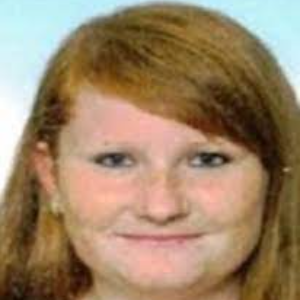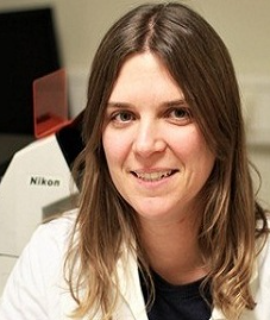Marianne Parent, Université de Lorraine, France
S-nitrosoglutathione (GSNO) is a physiological nitric oxide donor and a promising drug for several acute or chronic diseases (e.g. stroke, atherosclerosis, …). However, this nitrosated tripeptide is highly hydrophilic and easily degraded while exposed to oxygen, light, met [....] » Read More
































































Title : Docetaxel-liposomes prepared by the dual centrifugation method: Effect of propylene glycol and lipid charge on liposomal characteristics
Ann Mari Holsaeter, The Arctic University of Norway, Norway
Docetaxel (Doc) is a highly lipophilic anticancer drug. The current Doc treatment gives several side effects that might be prevented when Doc is incorporated in liposomes. The first aim of this study was to adapt the Dual Centrifugation (DC) method as a preparation technique for [....] » Read More
Title : Delivering type I interferon to dendritic cells empowers tumor eradication and immune combination treatments
Jan Tavernier, Ghent University, Belgium
An ideal generic cancer immunotherapy should mobilize the immune system to destroy tumor cells without harming healthy cells and remain active in case of recurrence. Furthermore, it should preferably not rely on tumor-specific surface markers, as these are only available in a lim [....] » Read More
Title : Lipid and carbohydrate based delivery vesicles for gene therapeutics: Approaching difficult diseases
Kira Astakhova, University of Southern Denmark, Denmark
RNA therapeutics is a broad group of RNA oligo- and polymers that knock down, insert or replace a disease associated RNA. RNA therapeutics act via diverse biological mechanisms including e.g. antisense oligonucleotides (ASOs), RNA interference oligonucleotides, mRNAs and sgRNA/CR [....] » Read More
Title : In vitro modeling of the blood-brain barrier to assess CNS drug delivery
Fabien Gosselet, Blood-brain barrier laboratory, Artois University, France
The blood-brain barrier (BBB) is located at the brain microvessel level and isolates the brain from the whole body, thus restricting molecule and cell exchanges between cerebral and peripheral compartments. BBB physiology is altered in Alzheimer’s disease (AD) mainly charac [....] » Read More
Title : Prototyping and evaluating a novel humanoid chewing robot for drug delivery using a medicated chewing gum
Kazem Alemzadeh, University of Bristol, United Kingdom
The global pharmaceutical market in 2009 was estimated at $837 billion and the US had a largest market share worth $300 billion per annum. It is estimated that the market could be worth nearly $1.6 trillion by 2020. The global drug delivery market in 2016 was estimated to be wort [....] » Read More
Title : Multifunctionalized and targeted biocatalytic nanoreactor for combinatory treatment of ER+ breast cancer
Rafael Vazquez-Duhalt, Universidad Nacional Autónoma de México, Mexico
Background: Tamoxifen is the standard endocrine therapy for breast cancers, which require metabolic activation by cytochrome P450 enzymes (CYP). However, the lower and variable concentrations of CYP activity at the tumor remain major bottlenecks for the efficient treatment, [....] » Read More
Title : New approach to study difference in NSAIDs enantiomer activity, including chiral inversion
Tatyana V. Leshina, Voevodsky Institute of Chemichal Kinetics and Combustion SB RAS, Russian Federation
The difference in the medical properties of the enantiomers of many chiral drugs is a well-known fact. This is a big problem, since most drugs are still used in the form of racemates. The latter is connected with the difficulties of separation. One of the most prominent represent [....] » Read More
Title : In situ delivery and production system of anti-cancer molecules with gene-engineered bifidobacterium
Shun’ichiro Taniguchi, Shinshu University School of Medicine, Japan
Regardless of recent rapid progresses in cancer therapy by molecular-targeting and regulating immune check points, the side effects of those treatments are still troublesome for the patients to be overcome. We have developed an in situ Drug Delivery and Production [....] » Read More
Title : Influence of mucoadhesivity on the bioavailability of nanoparticulate drug delivery systems
Ylenia Zambito, University of Pisa, Italy
The oral administration route is by far the preferred one and more than 80% of drugs are taken orally. Since the gastrointestinal (GI) tract is the primary site of drug delivery, many researchers have focused their attention on the mucus layer that covers the GI tract. Indeed, th [....] » Read More
Title : Systemic liver-targeting delivery of a novel DNA/RNA heteroduplex oligonucleotide via an enteral route
Chie Watanabe, Josai University, Japan
Since the advent of antisense technology, oligonucleotide drugs have attracted a greater deal of attention as next-generation therapeutics, which can be selectively delivered to their target tissue to obtain effective gene silencing. The production of conventional pharmaceutical [....] » Read More
Title : Physicochemical and biophysical study of mechanisms the drugs bioavailability enhancement with new multifunctional delivery systems
Nikolay E. Polyakov, Voevodsky Institute of Chemical Kinetics and Combustion, Russian Federation
One of the most important problems of modern pharmaceutics is the low solubility and bioavailability of drug compounds. These problems are solved by using various delivery systems that can form water-soluble “guest-host” complexes with drug molecules. One of the advan [....] » Read More
Title : Designing ADME formulations with matching exposures to amorphous solid dosage forms
Aditya Tatavart, Merck Sharp & Dohme Inc, United States
Amorphous solid dispersion (ASD) based formulations have been frequently used to improve the bioavailability of poorly soluble drugs. However, common processes to produce ASDs are not feasible for absorption, distribution, metabolism and excretion (ADME) studies with radio-labele [....] » Read More
Title : Wound healing mats made of layer by layer coated nanoparticles and electrospun nanofibers
Gulcin Arslan Azizoglu, Ege University, Turkey
Introduction: A broad range of diseases could be altered using layer-by-layer (LbL) based nanoparticles which is an emerging and powerful method to develop multifunctional nanomedicines. In this study, a combined formulation was achieved with LbL coating of silver nanosphere [....] » Read More
Title : In vitro model of diclofenac sodium gel delivery through pig skin
Enkelejda Goci, Aldent University, Albania
At first sight transdermal drug delivery appears to be a simple form of treatment, but closer examination reveals that dermatological form doses represent one of the most difficult aspects of the science of pharmaceutical formulation. Modern formulation methods nowadays, however, [....] » Read More
Title : Influence of formulation and freeze drying process variations on protein stability
Paritosh Pande, IMA Life North America and University of Connecticut, United States
Nearly half of the therapeutic proteins undergo freeze drying process to improve their long-term storage stability but the inability to directly control the product temperature during freeze-drying process can lead to non-uniform distribution of critical quality attributes (CQAs) [....] » Read More
Title : Valproic acid encapsulated biodegradable microneedles for treatment of androgenetic alopecia
Shayan Fakhraei Lahiji, Yonsei University, Korea, Republic of
There are numerous genetic and environmental factors responsible for occurrence of male pattern hair loss known as androgenetic alopecia. Despite considerable medical advancements, the current treating agents, are limited by unsatisfactory cure rate and potential side effects. Va [....] » Read More
Title : Therapeutic effects of trehalose liposomes against tumors along with apoptosis
Yoko Matsumoto, Sojo University, Japan
Trehalose stabilizes membranes and proteins in cells most likely by hydrogen bonding. Trehalose liposomes (DMTre) composed of L-α-dimyristoylphosphatidylcholine (DMPC) and trehalose micelles (TreC14) have been produced by sonication of a mixture of DMPC and TreC14 in [....] » Read More
Title : Novel developments in lipid-based multifunctional combination nanopreparations for multidrug resistant cancer
Vladimir P. Torchilin, Northeastern University, United States
Therapy of multidrug resistant cancers could be significantly enhanced by using siRNA down-regulating the production of proteins involved in cancer cell resistance, such as Pgp or survivin. Even better response could be achieved is such siRNA could be delivered to tumors together [....] » Read More
Title : Taking your active from the lab to scale-up formulation development of a topical delivery systems
Robert Houlden, Formulytica Pty. Ltd, Australia
The presentation will discuss (with practical examples) the steps required to take a pharmaceutical active from the research lab to developing a topical oil-in-water vehicle or gel for drug delivery. Preformulation steps such as methods to increase solubility and skin penetration [....] » Read More
Title : Government and industry response to the US opioid epidemic
Robert P. Bianchi, Prescription Drug Research Center, United States
Prescription drug abuse has been declared an epidemic in America by the Centers for Disease Control and Prevention and the president of the United States which makes up 4.6 percent of the world’s populations but consumes 81 percent of the world supply of oxycodone. The FDA [....] » Read More
Title : The use of self-immolative polymers to control cellular delivery
Georgina Kate Such, The University of Melbourne, Australia
Nanoparticles are of interest for the delivery of therapeutics as they are capable of targeting drug release specifically to diseased cells and tissue. Self-assembled polymeric carriers have generated particular attention for drug delivery applications due to their simple and ver [....] » Read More